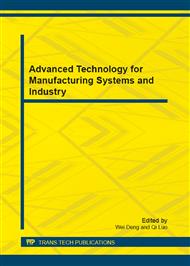p.61
p.67
p.72
p.78
p.83
p.89
p.95
p.99
p.105
Comparison of Multivariate Calibrations for the Determination of Soluble Solids Content of Tea Beverage Using UV-VIS-NIR Spectroscopy
Abstract:
Ultra-violet, visible and near infrared (UV-VIS-NIR) spectroscopy combined with chemometrics was investigated for fast determination of soluble solids content (SSC) of tea beverage. In this study, a total of 120 tea samples with SSC range of 4.0-9.5 ºBrix were tested. Samples were randomly divided for calibration (n=90) and independent validation (n=30). Spectra were collected by a mobile fiber-type UV-VIS-NIR spectrophotometer in transmission mode with recorded wavelength range of 203.64-1128.05 nm. Various calibration approaches, i.e., principal components analysis (PCA), partial least squares (PLS) regression, least squares support vector machine (LSSVM) and back propagation artificial neural network (BPANN), were investigated. The combinations of PCA-BPANN, PCA-LSSVM, PLS-BPANN and PLS-LSSVM were also investigated to build calibration models. Validation results indicated that all these investigated models achieved high prediction accuracy. Especially, PLS-LSSVM achieved best performance with mean coefficient of determination (R2) of 0.99, root-mean-square error of prediction (RMSEP) of 0.12 and residual prediction deviation (RPD) of 15.16. This experiment suggests that it is feasible to measure SSC of tea beverage using UV-VIS-NIR spectroscopy coupled with appropriate multivariate calibration, which may allow using the proposed method for off-line and on-line quality supervision in the production of soft drink.
Info:
Periodical:
Pages:
83-88
Citation:
Online since:
November 2012
Authors:
Price:
Сopyright:
© 2012 Trans Tech Publications Ltd. All Rights Reserved
Share:
Citation:


